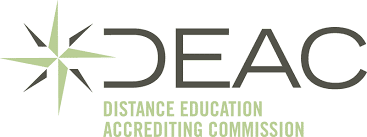Effective Approaches To Teaching Young Learners Who Don’t Speak The Language: How To Teach English To Beginner Kids
Join a global community of over 200,000 TEFL teachers working throughout the world! Enrol me!
A common question we get asked is: How do I teach students who can’t speak a word of English? Well, what if we up the ante and ask: How do I teach Young Learners who can’t speak English?
And that’s a very good question.
So we asked TTA alumna Rebekah Kendal to help us answer it. After all, as an English teacher in a tiny – but no doubt gorgeous – French village, she has experience not only teaching Young Learners, but also teaching English to Beginner kids.

This is what she had to say:
It’s easy to assume that, in this globalised world, everyone knows a little bit of English, right? After all, every second kid I talk to here in France cites Harry Potter or Star Wars as their favourite movie.
But, here’s the thing: they watch those movies (and everything else on Netflix) in French. They also listen to French pop music and idolise French sports stars.
Sure, they learn English at school, but not properly before the age of ten. So, it’s not uncommon for kids under this age to know very little English – a few words at most – or no English at all.
Understanding the challenges: Why teaching English to Beginner kids is unique
I’m rather embarrassed to admit that I made the mistake of assuming that popular anglophone culture is so pervasive that even young French children would be familiar with basic English words and phrases. Quelle arrogance !
I offer private English lessons in a village in rural France. The first time I was faced with a small group of kids who were absolute Beginners was a disaster. I panicked and spent most of the lesson speaking French. So much for the immersive method!
Read more: Immersion Learning Explained
And if I’m being honest…
While I do try to speak English as much as possible during class, I have to confess that when I am teaching absolute Beginners, I do speak French (the L1) from time to time. Here’s why:
- Connection: I’ve found that establishing a good rapport and connection with the kids I teach goes a long way to making the classes enjoyable and productive. While non-verbal cues (such as smiling) can help strengthen rapport, it‘s easier to establish a connection quickly if it’s possible to communicate in the L1.
- Explaining complex instructions: It’s relatively easy to convey the meaning of single-word instructions – such as ‘listen’ or ‘repeat’ – using gestures. However, some games require more complex instructions. For absolute Beginners, I find it is effective to convey complicated instructions using the L1.
Psst! If you’re struggling with instructions, you should read our blog post: How Should Teachers Give Instructions
Of course, the challenge here is to progressively reduce the use of the L1 as the students pick up more and more English words and phrases and become capable of following English instructions. It’s easy to fall into the trap of communicating primarily in the L1… even when your own grasp of the L1 leaves much to be desired!
Tips and tricks for teaching Beginners: The role of songs, games, and stories in language learning
While teaching Beginners can be daunting, it can also be so rewarding. There’s something special about watching your students’ confidence grow as they discover that they can begin to communicate in a language that is not their own.
Here’s what I’ve learnt since that disastrous first lesson with my Beginner students.
Routines can be useful
Establishing routines – such as greetings at the beginning and end of each class – can be a great way to sneak in a little conversational English. At first, your students may have no idea what you’re saying, but if you follow the same routine each class, they will quickly pick it up.
You can start with something simple:
- Hello, how are you? I’m fine, how are you?
- Goodbye, see you next time.
Once the students are familiar with this routine, you can introduce new questions and phrases:
- Hello, how are you? Did you have a good day?
- Goodbye, see you next time. Have a nice week!
I’ve also found that by repeating certain games and activities from one class to the next, the students learn what is expected of them. This way they can focus on the English instead of trying to figure out what they’re supposed to be doing.
It’s okay to look silly
In fact, when you’re teaching kids, being willing to look a little silly is kind of a superpower. The kids laugh. They have fun. They’re not afraid to look silly. Everyone learns.
If looking silly doesn’t come naturally to you, I can recommend these two activities:
- Singing: Most kids love singing. My own offspring are constantly making up songs about whatever it is that they are doing. So, channel your inner Idol and belt out a charming rendition of ‘Head, shoulders, knees and toes’ or ‘If you’re happy and you know it…’. To up the silly factor – and improve learning – I strongly recommend a song with actions.
- Charades: If you haven’t slithered like a snake across your classroom floor, have you really embraced your inner teacher? What I love about this activity is that everyone gets to take part and the kids can shout out English words without worrying about whether they have the correct word or pronunciation.
Make it fun!
In my experience, the best way to get buy-in from kids is to make something fun. Well, that and sweets. And while I’m not against a sugar-filled reward from time to time, games tend to be met with more parental approval and work pretty effectively. Firm favourites in my classroom include:
- Memory game
- Charades
- Pictionary
- AGO cards ( a similar concept to Uno, but the cards also contain English questions)
Giving kids the opportunity to draw, sing, act or play games while learning English not only makes the lesson more enjoyable, it also facilitates learning.
Get moving
If you’ve ever spent any time around kids, you’ll know that they were made to move. Sitting still for more than five minutes just isn’t feasible for many eight-year-olds. Throw in some repetition – because classes for Beginners are all about repetition – and you have a recipe for disaster.
Getting kids to move regularly during class helps to keep them focused and improves learning. I like to break up seated activities with a bit of ball tossing and vigorous Simon Says.
Ball toss
What I love about this activity is that you can adapt it to suit whatever you are currently teaching. The basic principle is that you stand in a circle and throw a (preferably soft!) ball to one another. When you throw/catch the ball, you say a word or phrase.
Doing numbers? Every time a kid catches the ball, they say the next number in the sequence. If the ball gets dropped or the English word is forgotten, you start again from scratch.
Q&A: Teach the kids a set of questions and answers. It could be one set (What is your name?/My name is…) or several. The person who throws the ball asks the question and the person who catches the ball answers.
Simon Says
This game is great for teaching verbs. Simon Says jump/stand up/ sit down/ run etc. I find that in the beginning it helps to do the actions with the kids and after they’ve played the game a number of times, you can give the instructions without doing the actions yourself.
Once they get the hang of the game, you can ask different children to take on the role of Simon to establish which words they know and give them the opportunity to speak.
Visual aids are vital
One of the easiest ways to teach new vocabulary to absolute Beginners is through realia and visual aids such as flashcards. Accompanying certain words that you use regularly in class with gestures can also help convey meaning.
Of course, standing in front of your students and slowly working your way through a pile of flashcards is not the best use of this resource. Instead, try using flashcards to tell a story or play a game:
Fun activities with flashcards
My students enjoy playing a game where we lay the flashcards out on the table and go through each of the words together. We then turn the flashcards over (so that the images are still visible, but not the words) and students take turns trying to recall as many of the words as they can.
Another fun game you can play with flashcards is to lay them out with only the images showing. You then shout out a word – for example, cat – and the students try to snatch up the card with the image of the cat as quickly as they can. At the end of the game, the student with the biggest pile of cards wins.
Slow is good; slower is better
For absolute Beginners, it’s not only the words that are new… even the sounds within the words are unfamiliar! I’ve realised that even when I think I’m speaking slowly, I’m generally not speaking slowly enough. I’ve found that it helps to:
- Speak slowly and clearly
- Limit the number of words I use
- Use repetition.
Sometimes speaking slowly feels awkward. You might worry that your students will get bored with all the repetition, but you can pick up the pace once your students have established a solid foundation.
During the early lessons, it’ll feel like progress is slow, but it is important to celebrate the small advances that your students make and to congratulate them when they learn a new phrase or remember a word from the previous class!
Those are some great tips from Rebekah! But if you’re worried about teaching English to Young Learners or Beginners or Beginner Young Learners (!), remember that our TEFL course will teach you everything you need to know to be an effective TEFL teacher.
Accreditation & Quality Assurance
The TEFL Academy was the world’s first TEFL course provider to receive official recognition from government regulated awarding bodies in both the USA and UK. This means when you graduate you’ll hold a globally recognised Level 3 (120hr) Certificate or Level 5 (168hr) Diploma, meaning you can find work anywhere and apply for jobs immediately.
 Ireland
UK
Ireland
UK


















